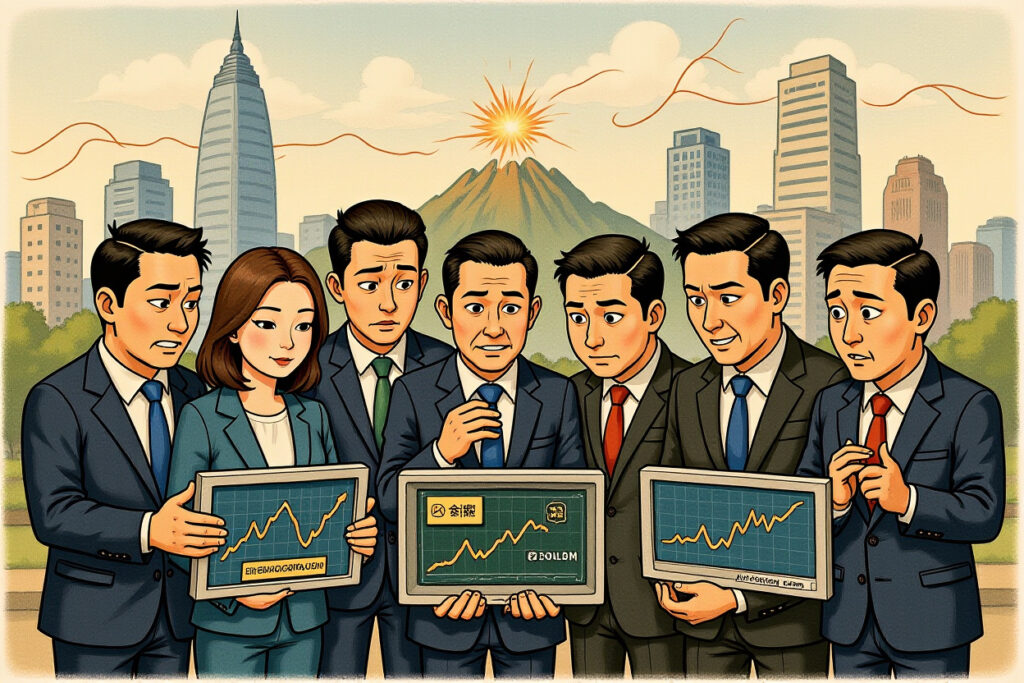Executive Summary
Arc’teryx’s controversial Himalayan fireworks project reveals deeper tensions between outdoor brands’ commercial ambitions and their environmental commitments.
- Arc’teryx partnered with artist Cai Guoqiang for high-altitude fireworks display at 5,500 meters in Tibet’s Himalayas
- Brand faces severe backlash from outdoor community over ecological concerns despite claimed biodegradable materials
- Incident exposes growing disconnect between Arc’teryx’s commercial success and its core outdoor values
- Parent company Amer Sports reported 36% revenue growth to $2.19 billion in 2024
- Industry-wide lesson about balancing premiumization with authentic outdoor ethos
High-Altitude Art Project Ignites Outdoor Community Fury
The September 19th fireworks display in Tibet’s Jiangzi Relong area, standing at approximately 5,500 meters elevation, was intended as a celebration of Eastern dragon culture through contemporary art. Artist Cai Guoqiang (蔡国强) orchestrated three explosive sequences along mountain ridges, creating a ‘Rising Dragon’ visual spectacle symbolizing prosperity and continuity in Chinese tradition. However, what was conceived as a cultural milestone quickly transformed into a public relations crisis for the premium outdoor brand.
The immediate digital erasure of promotional content following public outcry only amplified perceptions that Arc’teryx recognized the misstep but chose evasion over engagement. This response pattern contradicts the transparent communication style that built trust with the outdoor community during the brand’s earlier development phases.
Environmental Safeguards Face Scrutiny
Event organizers released detailed environmental protection measures attempting to demonstrate ecological responsibility. The documentation specified use of biodegradable colored powders allegedly validated by International Olympic Committee standards and various international pyrotechnic regulations. The fireworks were classified as Level V (lowest risk category), with claims of reduced noise and light pollution compared to conventional displays.
The comprehensive protection plan outlined a three-phase approach: prevention, monitoring, and restoration. Pre-event measures included relocating livestock to safe distances and using salt bricks to guide small animals like pikas away from the blast area. Post-event commitments involved immediate debris cleanup and soil turnover with vegetation restoration for affected meadows and farmland.
Ecological Concerns Versus Corporate Claims
The Himalayan region’s extreme fragility makes any human intervention potentially consequential. Thin soil layers, slow vegetation recovery cycles, and sensitive wildlife populations create ecosystems where minor disturbances can trigger cascading effects. The outdoor community’s skepticism centers on three critical gaps in Arc’teryx’s environmental narrative.
Material certifications completed in standard environments may not accurately predict performance at 5,500 meters elevation where temperature, oxygen levels, and UV radiation differ dramatically. The absence of published verification documents for高原 (high altitude) conditions leaves unanswered questions about complete biodegradation timelines and potential residual contamination.
Unaddressed Ecological Impact Questions
Beyond surface-level cleanup, explosive charges potentially alter soil compaction and drainage patterns on ridge lines. The mechanical turnover of soil for vegetation restoration may damage delicate root systems that require years to reestablish in high-altitude environments. No third-party environmental impact assessment has been presented to quantify these potential effects.
Wildlife protection measures appear particularly inadequate for regionally endangered species. While salt bricks might redirect some small mammals, the strategy offers no protection for snow leopards (雪豹), Tibetan antelope (藏羚羊), or migratory birds that could experience stress responses from distant concussive effects. The outdoor brand’s core values of minimal environmental interference seem compromised by these unquantified risks.
Commercial Success Versus Brand Identity Crisis
Arc’teryx’s parent company Amer Sports (亚玛芬体育) has demonstrated impressive financial performance, with the subsidiary brand growing 36% to $2.19 billion in revenue according to 2024 annual reports. Anta Group (安踏集团), holding approximately 42.52% of Amer Sports since its February 2024 IPO, has successfully positioned Arc’teryx as a premium lifestyle brand beyond its technical outdoor origins.
This commercial transformation however has created increasing tension with the brand’s original identity. Where Arc’teryx once built loyalty through glacier conservation projects, garment recycling programs, and Leave No Trace advocacy, recent marketing initiatives prioritize artistic spectacle and luxury positioning. The Himalayan fireworks project represents the most dramatic manifestation of this strategic shift.
Core User Alienation Accelerates
Longtime devotees perceive the brand’s evolution as abandonment of foundational principles. The transition from ‘professional outdoor equipment’ to ‘urban status symbol’ has been accompanied by pricing strategies that place products increasingly beyond reach of serious adventurers. Physical retail spaces now emphasize ‘bureau-chic’ and ‘EMBA uniform’ aesthetics over technical performance displays.
The silent deletion of controversial content following the fireworks backlash exemplifies this growing communication gap. Where the brand previously engaged substantively with community concerns, current responses suggest prioritization of commercial形象 (image) over authentic dialogue. This outdoor brand’s core values appear increasingly secondary to market expansion objectives.
Industry-Wide Premiumization Pitfalls
Arc’teryx’s predicament reflects broader challenges within the outdoor industry as brands pursue growth through premium positioning. The North Face, Columbia, and other heritage outdoor labels have similarly attempted to expand beyond technical markets into fashion-conscious consumer segments. Frequently, these transitions weaken connections to original user bases without guaranteeing successful adoption by new demographics.
The fundamental miscalculation often lies in equating ‘premiumization’ with elevated pricing and sophisticated marketing rather than enhanced value delivery. True premium outdoor brands deepen their commitment to environmental stewardship and technical innovation rather than distancing from these foundations. The outdoor brand’s core values should drive premium positioning rather than being compromised by it.
Patagonia’s Values-First Alternative
Patagonia’s market success provides instructive contrast to Arc’teryx’s current challenges. Despite operating in similar product categories and price segments, Patagonia has intensified its environmental activism and technical focus while expanding commercially. The company’s public opposition to fast fashion, commitment to durable design, and donation of全部利润 (all profits) to environmental causes has strengthened rather than diluted brand identity.
This values-forward approach demonstrates that outdoor brands can pursue growth without abandoning foundational principles. Patagonia’s expansion into urban environments has been guided by consistent material innovation and environmental messaging rather than departure from outdoor origins. The model suggests that authentic outdoor brand’s core values can attract new consumers when communicated consistently.
Rebuilding Trust Through Authentic Action
The Himalayan controversy ultimately concerns Arc’teryx’s cultural identity more than specific environmental protocols. Even if the fireworks event eventually receives full ecological certification, the brand has damaged its relationship with core users through perceived价值观 (values) divergence. Where Arc’teryx once positioned itself as nature’s guardian, the pyrotechnic spectacle suggests nature’s entertainer.
Recovery requires moving beyond public relations maneuvers to substantive realignment. Publishing detailed environmental data from independent assessments would address ecological concerns directly. More importantly, the brand must reanchor strategic decisions in its outdoor heritage rather than luxury marketing objectives. This outdoor brand’s core values need reclamation, not just repackaging.
Strategic Recommendations for Values Integration
Arc’teryx should consider establishing a core user advisory council with representation from leading outdoor conservation organizations. Product development priorities might rebalance toward technical innovation rather than fashion-forward styling. Marketing initiatives could highlight environmental partnerships rather than artistic collaborations.
Most fundamentally, the brand must decide whether it serves the outdoor community or merely sells to it. The former requires embedding outdoor values throughout organizational culture and business practices. The latter risks continuing erosion of brand equity through commercially expedient but authenticity-compromising initiatives.
Enduring Lessons for Outdoor Industry Leadership
The fireworks controversy illuminates critical questions about brand evolution in outdoor markets. Commercial success need not require abandonment of foundational principles, but does demand conscious effort to scale values alongside operations. The most sustainable growth strategies integrate business objectives with environmental and community commitments.
Arc’teryx’s path forward involves choosing between two futures: continuing as a luxury apparel company using outdoor imagery or recommitting as an outdoor company producing premium products. The former offers broader market reach but thinner competitive advantages. The latter provides deeper brand equity but narrower commercial scope. This outdoor brand’s core values will determine which path prevails.
Industry participants should monitor how Arc’teryx addresses this identity challenge. The resolution will signal whether premium outdoor brands can maintain authentic connections to their foundations while pursuing global growth. Investors might consider establishing environmental, social, and governance (ESG) criteria specific to outdoor industry values when evaluating sector opportunities.
For now, the Himalayan fireworks have faded, but their illumination of the outdoor industry’s identity crisis continues. The episode reminds all outdoor brands that commercial success built on outdoor values cannot be maintained by abandoning those same values. The most valuable brand assets are often the most intangible: trust, authenticity, and shared purpose with user communities.




